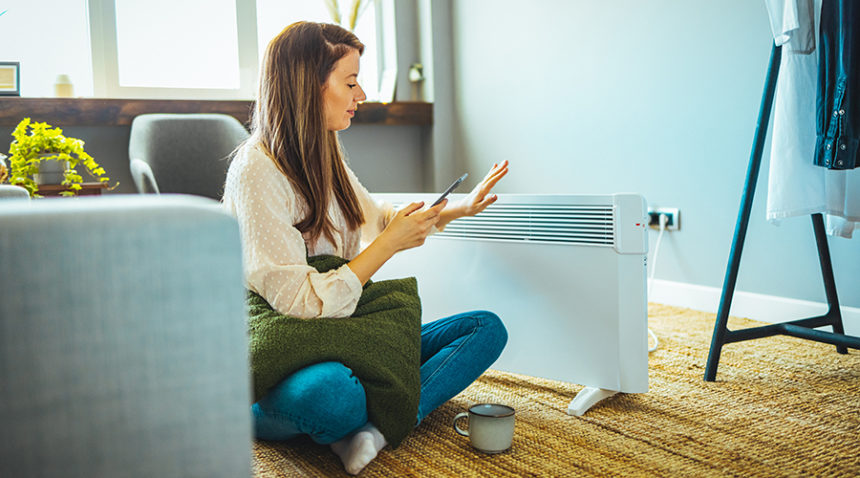When the weather outside is frightful, we’ll often close our windows tight and turn up the heat. But the furnaces, stoves and generators we’re using to keep cozy also come with a hidden risk: carbon monoxide poisoning.
Carbon monoxide is a colorless, odorless gas, so it’s hard for us to detect it on our own using our five senses. But when a person inhales these fumes in a poorly ventilated area, the result could be deadly.
Each year, at least 430 people in the U.S. die from accidental carbon monoxide (CO) poisoning. Big weather events, such as snowstorms, hurricanes and heavy thunderstorms, are often to blame. When a storm knocks out power, people turn to portable generators and other devices for heat and electricity, but using this equipment improperly can be dangerous.
Here’s what you should know to keep you and your family safe.
Where Is Carbon Monoxide Found?
Carbon monoxide is produced by some of the most common ways we get heat.
“Whenever certain fuels are burned—like charcoal, propane, coal, wood, gasoline or kerosene—carbon monoxide may be released as a byproduct of incomplete combustion,” says Anita Skariah, DO, a physician with Orange Family Medical Group in Hillsborough
Carbon monoxide poisoning may occur when someone breathes these fumes in a poorly ventilated area.
“Normally, your red blood cells carry oxygen to your tissues, but when you experience carbon monoxide poisoning, the blood cells become saturated with carbon monoxide, thereby depriving the body of needed oxygen,” Dr. Skariah says.
This can lead to tissue damage in many organs including the brain and heart.
Dr. Skariah says 200 to 300 emergency room visits each year in North Carolina are from patients exposed to carbon monoxide.
How to Spot Symptoms of CO Poisoning
The symptoms of CO poisoning can appear within a few hours, Dr. Skariah says. The longer a person inhales the gas, the worse the effects will be.
The most common symptoms of carbon monoxide poisoning include a dull headache, dizziness, weakness, nausea and fatigue. With severe exposure, symptoms will be more intense and can include vomiting, confusion, shortness of breath, chest pain, loss of consciousness and even death.
Some patients may notice a difference in how they feel in certain environments. For example, they may feel ill at home but then feel fine when they leave.
If you or someone you know is showing any symptoms of CO poisoning, get outdoors immediately and call 911.
Dangers in the Home
Everything from furnaces and water heaters to ovens and barbecue grills can produce carbon monoxide. Vehicle exhaust is another common source—and is especially dangerous when it’s cold outside and people warm up their cars while in a garage, Dr. Skariah says.
“Once you start your car, you need to back it away from the house. Leaving it idle, even with the garage door open, still allows CO to leak inside your home,” she says.
Generators also frequently lead to accidental CO poisoning. Never operate a generator inside a home, garage, shed or on a porch. They should be used only outside.
“Place the generator 20 feet away from the house with the engine exhaust directed away from doors and windows and air vents,” Dr. Skariah says.
Sometimes people use propane cookers or charcoal grills as alternative sources of heat when they lose power, but the fumes can also cause carbon monoxide to accumulate in the home.
How to Prevent CO Poisoning
There are some critical steps you can take to minimize the danger of carbon monoxide in your home.
- Install carbon monoxide detectors, which can sense CO in the air and sound alarms when it is present.
“Install them in each hallway near bedrooms, and make sure to check the batteries twice a year, just like smoke detectors,” Dr. Skariah says.
- Never leave the motor running in a vehicle that is parked in an enclosed or partially enclosed space.
- Use fuel-burning appliances only as they are intended. Have them professionally inspected once a year or as recommended by the manufacturer.
“Check for streaks of soot around appliances like boilers and stoves. That can indicate CO exposure,” Dr. Skariah says. “The gas from fireplaces and stoves should have a blue flame. If you see an orange or yellow flame, it could be carbon monoxide. Also, rusting on appliance jacks may be a clue of CO exposure.”
- Don’t use unvented kerosene or gas space heaters in the home. Also, do not use portable heaters while sleeping in enclosed areas.
- Never use grills indoors or in poorly ventilated areas.
- Never use a gas oven or clothes dryer as a heating source.
- Check for blockages and cracking in chimney flues and vents. They should be free of debris, which can block ventilation lines.
- When using a gas-powered generator, be sure to keep it a safe distance away from the home.
Treatment for CO Poisoning
If you think you have been exposed to carbon monoxide, first get out of the building or car and into the fresh air. If you need treatment, call 911 or go to the emergency department.
Many people purchased pulse oximeters during the COVID-19 pandemic to monitor oxygen levels at home. These will not be able to detect CO poisoning.
Hospital staff will give patients high concentrations of oxygen through a face mask to replace the carbon monoxide in the patient’s blood. Healthcare providers will then check CO levels in the blood periodically until they are low enough for the patient to safely return home.
Concerned about your health? Call your primary care doctor or find one near you.

